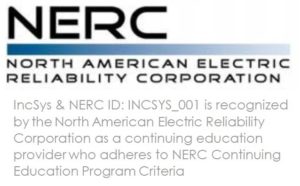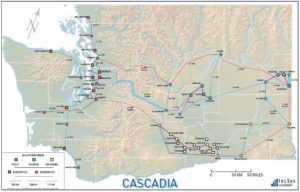 Generator Re-Dispatch
Generator Re-Dispatch
Course NERC Continued Educational Hours: OT: 2; Stand: 2; SIM: 2
This is a NERC Continued Educational computer-based training module which consists of a video lecture and two simulation exercises. Students watch a video lecture explaining the concept of generation redispatch as a tool for transmission operators to reduced overloaded transmission line conditions as they define generation shift factors (GSF) and how it affects a network and how network topology changes GSFs. In the simulation exercises the student learns how to calculate GSF along with the applicable requirements from TOP-001 and apply the concept of generation redispatch to alleviate SOL violations following a system contingency and respond to a double circuit line outage and observe a SOL violation on remaining parallel lines and review generation resources and determine which candidates to use for the generation redispatch. In the second exercise students will apply generation redispatch and load shedding during an Interconnection Reliability Operating Limit violation and play the roles of TO, BA, and RC. Students review TOP-001 requirements presented in “concept diagram” format and the established operating limits for the hypothetical power system. They will run an event file that leads to a transmission line being overloaded beyond its long-term rating. Based on contingency analysis studies that predict system collapse for the next N-1 contingency, students react to being in an IROL violation condition and choose the best action to stabilize the system. Students calculate the generation shift using power transfer distribution factors, then dump generation and shed load based on their choice and they will also observe the results and compare them to their calculations.
Cascadia 4040 – Course Objectives
Generator Re-Dispatch
- Define generation shift factors (GSF) and generation redispatch.
- Identify conditions where generation redispatch is effective.
- In hypothetical configurations, determine where generation should be increased and where it should be decreased to mitigate a line rating violation.
- State the entities authorized to direct a generation redispatch.
- Calculate generation shift factors that can be used to mitigate line overloads for various transmission system configurations.
- List the conditions that can affect generation shift factors & respond to multiple contingencies that create SOL violations.
- Identify a Generation shift plan when time is available.
- Determine the Power Transfer Distribution Factors (PTDFs) for the generation shift plan.
- Use the PTDF to determine the magnitude of the generation shift to eliminate the SOL violation.
- Use the PTDF to estimate the MW flows on the SOL violation after the Generation Shift.
- Estimate the time to alleviate the SOL violation based on unit ramp rates.
- Implement the Generation Shift Plan and Measure flows after the Generation Shift plan is completed.
- Compare the measured flows with the estimates based on the PTDFs.
- Respond to multiple contingencies that create SOL violations.
- Identify a Generation Shed and Load Shed plan when a Line Load Dump limit is exceeded.
- Determine the PTDFs for Generation and Load Shed plan from the Cascadia Electrical Distance Diagram.
- Use the PTDFs to determine the magnitude of the Generation and Load Shed to eliminate the SOL violation.
- Use the PTDF to estimate the MW flows on the SOL violation after Generation and Load Shed is implemented.
- Implement the Generation and Load Shed Plan.
- Measure flows after the Generation and Load Shed plan.
- Compare the measured flows with the estimates based on the PTDFs.
- Compare the PTDFs calculated from the before and after PowerSimulator measurements with the PTDFs calculated from the Electrical Distance Diagram.
Downloadable 4040 Course Flyer
Subject Matter Expert
This course listed is a NERC CE approved continuing education course which will help you obtain the required NERC CE Credit Hours for maintaining the validity of your NERC Certification.
End of Course Instructions
After successful completion of the course the certificate of completion will be available for download and print from your training homepage.
After successful completion of this course your credits will be automatically reported for NERC CE Credits via the NERC SOCCED reporting tool. IncSys Academy also has a policy where credits will be manually reported via SOCCED on a WEEKLY basis (every Monday). It is critical that each candidate provide IncSys Academy with their proper credentials to ensure that proper credits are reported to your SOCCED account. Please contact our team at 425.732.2377 X 3 or via email at calvin.kaiser@incsys.com to report any NERC CE credit items needed for resolution.
Quiz & Simulation Information
There are quizzes and simulation exercises in this course module which must be passed with a MINIMUM grade of 75% to complete the course. Please check your grade report to ensure that you have achieved a passing grade of at least a 75% for each graded area.
IncSys Non-Refundable Policy
Clients who purchase training from the IncSys Academy catalog portal are Non-Refundable from the date of payment. Please ensure that you copy and save your receipt order prior to closing out your purchase order payment.
